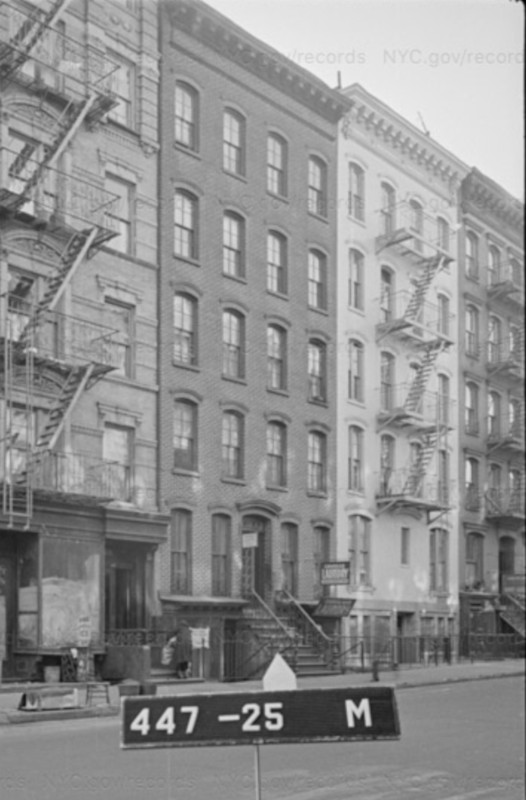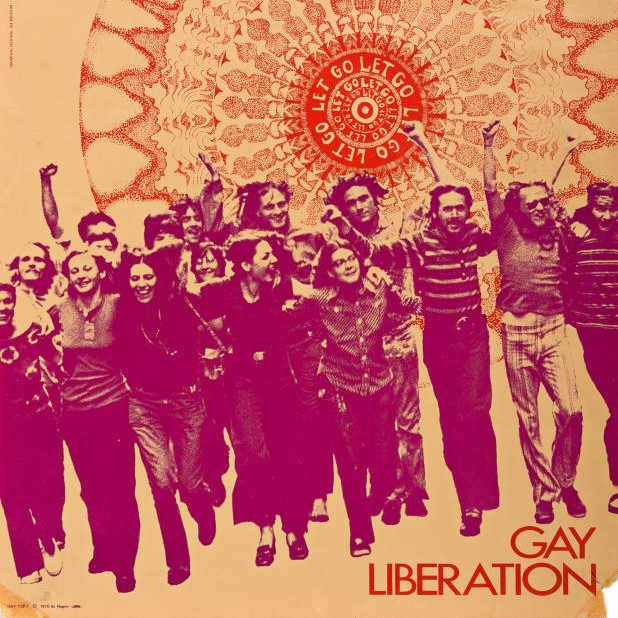
Ellen Broidy & Linda Rhodes Residence / Rita Mae Brown Residence
overview
From about 1967 to 1971, activists and then-partners Ellen Broidy and Linda Rhodes rented a fifth floor apartment at 338 East 6th Street. Fellow activist Rita Mae Brown rented the apartment next door for a couple years in the late 1960s.
In these apartments, women of the Gay Liberation Front (GLF) and Radicalesbians prepared for the “Lavender Menace” action and GLF held editorial meetings for the original volumes of their newsletter, Come Out.
History
In 1967, Ellen Broidy moved into a large, walk-up apartment on the fifth floor of 338 East 6th Street, in the East Village, a popular neighborhood for feminists. The railroad apartment had windows at the front and the back with two windowless rooms in the middle. Broidy described the apartment, which she rented for $32 a month, as “elegant” since it had a private bathroom as opposed to a communal bathroom in the hall. Broidy shared the apartment with her then-girlfriend Linda Rhodes.
Broidy lived in this apartment for four years while completing a degree in Classics at New York University (NYU). During this time, she became an early member of the Gay Liberation Front (GLF) and Radicalesbians and the first president of NYU’s Student Homophile League (later known as NYU Gay Students Liberation). Broidy, as well as Rhodes, are most well-known for presenting the resolution that created the Christopher Street Liberation Day March at the Eastern Regional Conference of Homophile Organizations (ERCHO), in Philadelphia. Thus, along with Craig Rodwell and Fred Sargeant, Broidy and Rhodes are considered founders of the Pride March.
Rita Mae Brown, another member of GLF and Radicalesbians who also was completing a Classics degree at NYU, lived in the apartment next door to Broidy and Rhodes for a couple years in the late 1960s. Broidy, Rhodes, and Brown were all involved in the “Lavender Menace” action at the Second Congress to Unite Women in 1970, and much of the strategizing occurred in their apartments. Women made signs and flyers and planned the flow of the action in Broidy and Rhodes’ apartment. Brown had recently moved out of her apartment, but Broidy and Rhodes still had complete access to it since they paid rent on both apartments for a time. Unlike Broidy and Rhodes’ apartment, Brown’s former apartment still had a bathtub in the kitchen which was used to dye the iconic lavender shirts for this action.
Activities in these apartments also helped advance GLF, then a fledgling organization. Broidy and Rhodes hosted editorial meetings for the first volumes of Come Out, GLF’s newsletter, in their apartment. Their landlord, who drove an ice truck, delivered ice for several GLF dances. Broidy commented that, although he “did not know it,” he was a “great resource,” and she joked that, “How else would we have gotten ice for beer and sodas?”
Due to its centralized location and apartments with relatively large living rooms, 338 East 6th Street was a popular gathering space for lesbians. Other members of GLF and Radicalesbians also lived in this building in the late 1960s and early 1970s: Jane Cohen lived on the floor below Broidy, Rhodes, and Brown, and Liz Wallace moved into Brown’s former apartment after she moved out. Broidy commented that “lots of people were in and out of the apartment,” leading the FBI to investigate the building. Another resident of the building, a Ukrainian grandmother who often asked lesbians “who’s the husband?” warned Broidy about the FBI’s presence.
After leaving 338 East 6th Street, Broidy moved to California where she became a librarian and faculty member, teaching in History and Women’s Studies, at multiple campuses of the University of California. She continues to be a LGBT rights activist. Rhodes maintained a career as an architect and Brown became an award-winning author best known for Rubyfruit Jungle (1973).
Entry by Emily Kahn, project consultant (July 2020).
NOTE: Names above in bold indicate LGBT people.
Building Information
- Architect or Builder: Unknown
- Year Built: c. 1865
Sources
Ellen Broidy, video calls with Emily Kahn/NYC LGBT Historic Sites Project, June 9 and July 10, 2020.
Fred Sargeant, “1970: A First-Person Account of the First Gay Pride March,” The Village Voice, June 22, 2010, bit.ly/3gwzaM5.
Do you have more information about this site?
This project is enriched by your participation! Do you have your own images of this site? Or a story to share? Would you like to suggest a different historic site?





